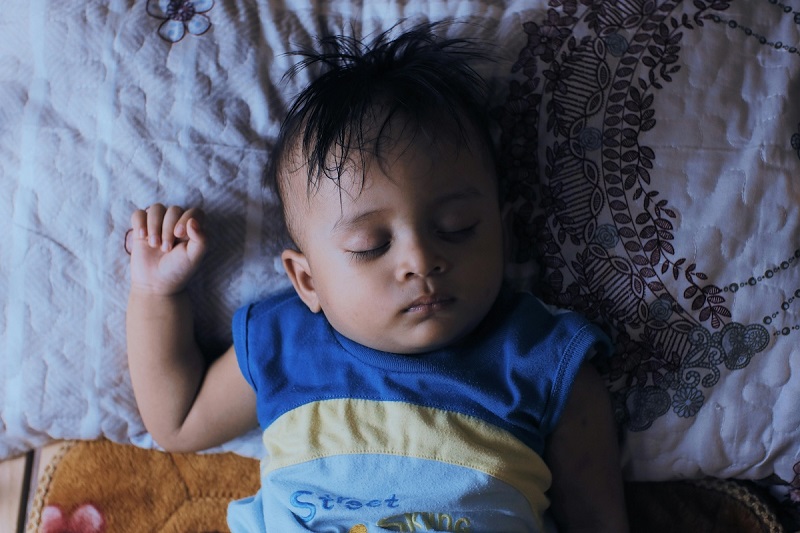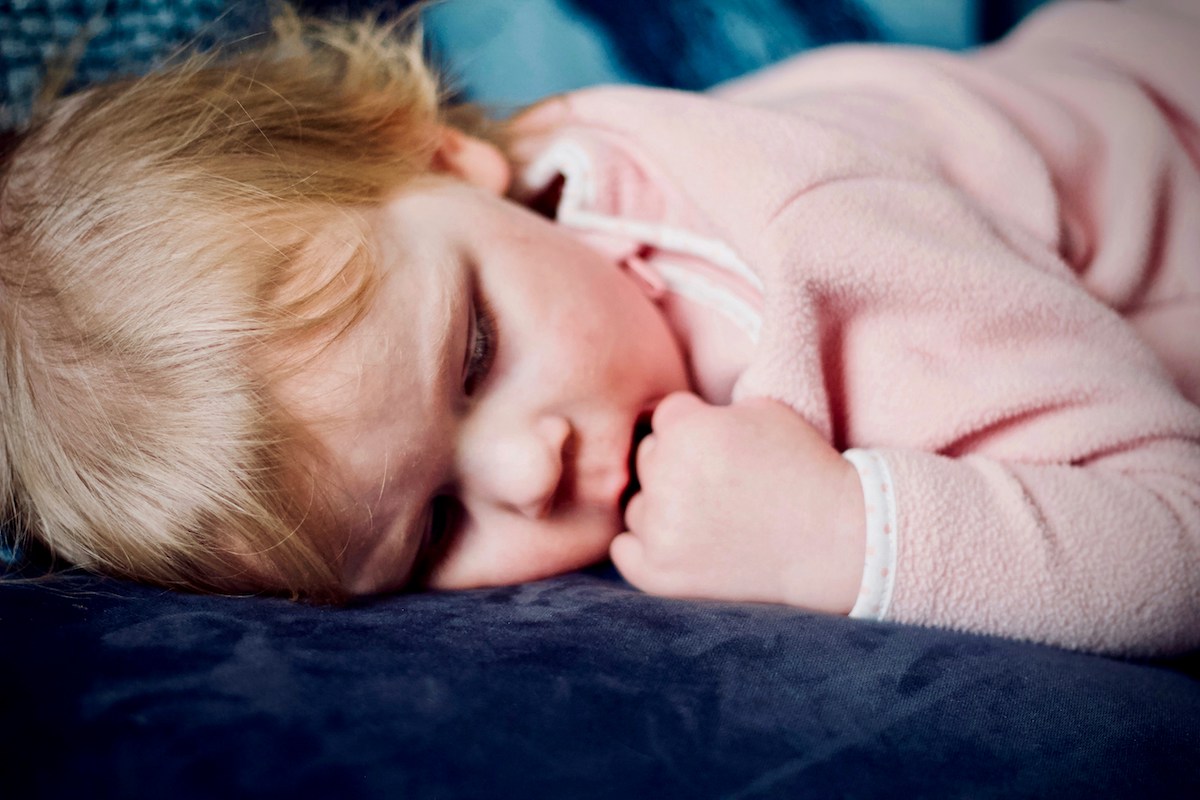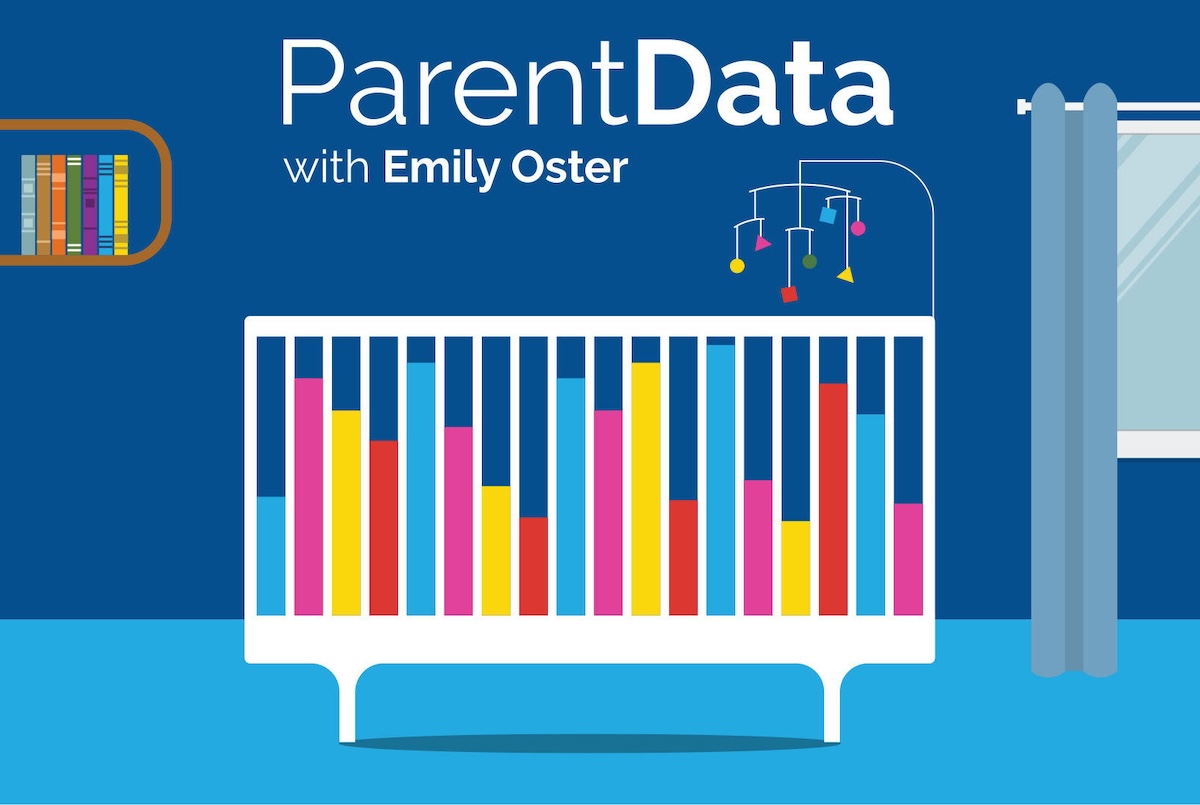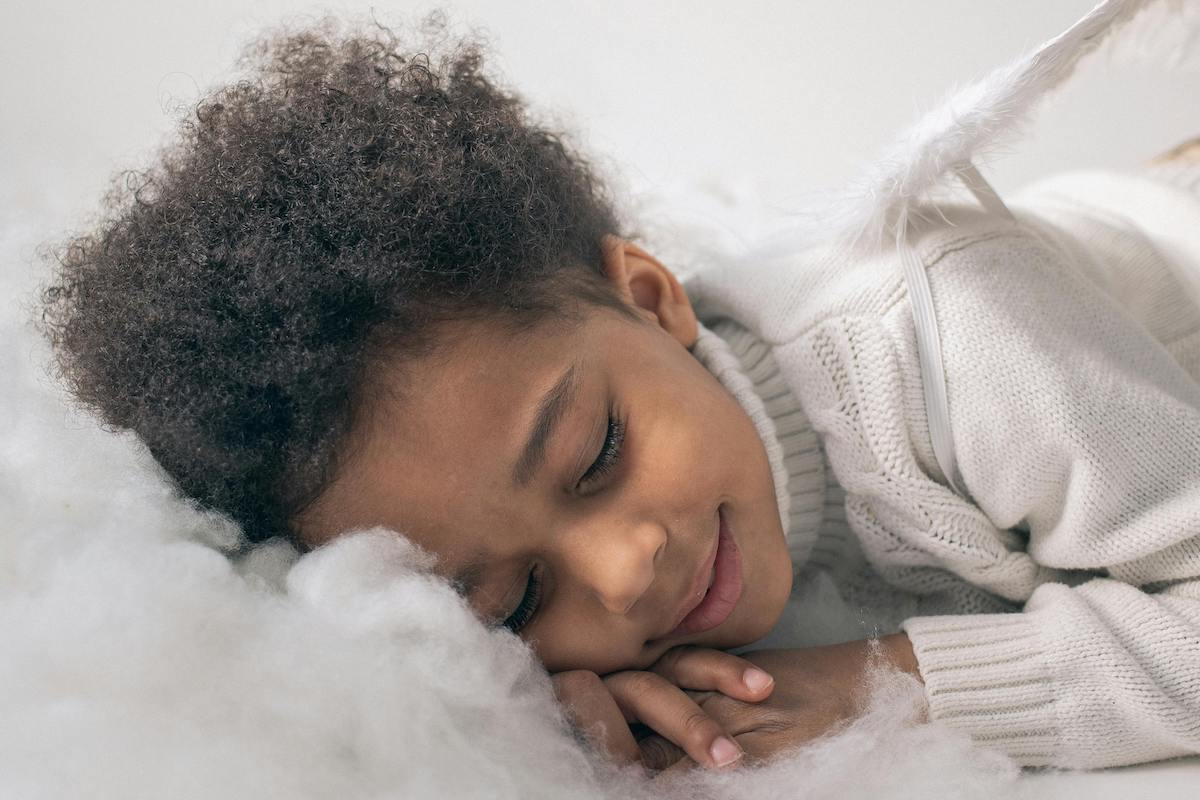Today is the second part in a series that shares results of a survey we did on your kids’ sleep habits. In part one, I talk about why we did the survey (it’s because everyone is obsessed with sleep) and analyze the nighttime sleep data, from where kids sleep to what bedtime looks like and the number of wakeups. Today, I’m moving on to naps!
When it comes to sleep, I always found naps much harder than the night. As you may be aware, I am a person who likes organization and control, and the uncertainty of the nap transition got me every time. In a way, I wish I had had the data below, which — spoiler — shows there is a lot of uncertainty in transition times. But now you’ll have it, so you can be more relaxed, which is always our goal.
I’m sorry to disappoint you, but today we will not be using data to settle the question of how to keep your child awake in the car so the nap is not ruined. However, after many years of parenting, I can say confidently that the only solution to this is to spray water lightly in their face until you get home. You’re welcome. Now, onward!

Details of data collection
A quick recap on data collection (skip over it if you saw this last week).
I sourced data from the ParentData audience (newsletter, Instagram, Twitter) and got some help with recruitment from the Nanit sleep monitor user base.
The final sample is 14,919 children. Some basic demographics:
- The median age was 22 months, with 99% of the data being for children under 10 years old.
- 51.5% of parents reported male children, 48.3% reported female children, and 0.3% declined to identify their child’s sex.
- About half of the children were the only one in their family (at least so far), with another 40% being one of two children.
In most graphs, I’m going to divide the sample into age-based groups: 0 to 3 months, 4-6 months, 7-9 months, 10-12 months, 13-18 months, 19-24 months, 2 to 3 years, 3 to 4 years, 4 to 5 years, and 5 to 10 years (I’ll drop kids over 10).
Number of naps
First up: number of naps by age. The graph below shows the nap groupings by age — more than three, going down to three, two, one, and no nap. People could also indicate napping was “irregular.”
The first three months of life are a chaotic combination of irregular napping, many naps, and a few brave or lucky souls who appear to have already arrived at a two- to three-nap schedule. Over the next few months, the naps consolidate to three and then to two. By the 10-to-12-month period, a very large share of kids are napping a consistent two naps per day. Over the period between 12 and 18 months, this shifts toward one nap. And then sometime in the range of 3 to 5 years, naps are dropped.
What I think is perhaps most useful about this graph is it gives a lot of color to the average napping ages that we often hear. When my daughter was 15 months or 16 months, we got the advice that this was around the time she would move to one nap. We ended up taking this “would” more as a “should” and effectively imposed one nap rather than two. It worked out okay, although we all still remember the time she fell asleep at lunch with food literally hanging out of her mouth.
In fact, the period between 13 and 18 months is a high transition period. The 10-to-12-month kids mostly nap twice, and the 19-to-24-months mostly nap once. But that middle group is split — and when we look more closely at that group [in the graph below], we see clearly that all kids do not switch right at 15 months. It’s gradual, which means it depends on the kid.
The dropping of the nap is even more variable. In these data, 30% of kids in the age range 4 to 5 are still napping once, while about 10% of the 2-to-3-year-olds have already dropped their nap. The move to zero naps seems to happen anywhere from 2 to 5 years.
That’s the number of naps. But when do they happen? And for how long? The answer, of course, depends on how many.
The three-nappers
The graph below shows the distribution of start times for each nap for the group that consistently naps three times. An average kid in this group takes their first nap around 9 a.m., their second at 12:30 p.m., and the third at 4. There’s a lot of variation! In particular, the second and third naps are quite wide-ranging. So much so that the start time of some children’s third nap overlaps with the start time of some children’s first naps.
In terms of length, the average kid is taking slightly longer naps for their first two, followed by a shorter nap as the third. The table below shows these lengths, and also two ideas of range. The first range captures the middle 50% of kids; the second is closer to the full range. You see a lot of variation, although consistently this third nap is more of a mini nap. Just enough to get them through dinner to bedtime.
The two-nappers
Turning to the (slightly older) two-nappers. Their nap time distributions are a bit more concentrated — the average first nap starts at 9:30 and the second around 2 or 2:30. But we’ve still got the early and late groups. Some kids do start their second nap as late as 4 or 5 p.m.
These naps are both on average a bit longer. When kids move from three to two naps, they lose, on average, 15 minutes of sleep. The rest of the third nap gets pushed into the first two naps, making them just over an hour on average.
The one-nappers
Finally: the one nap. The vast majority of kids are starting this nap between 11:30 a.m. and 2 p.m., with the spike right around 12:30 or 1. They have lunch (hopefully not falling asleep with food in their mouth) and then get to sleep. These naps [see table] are lasting two hours on average. That means when kids move from two naps to one, they lose about 30 minutes of total sleep in that transition. Again, though, lots of variation — some lucky parents are getting a solid 2 hours and 30 minutes of daytime sleep.
Total nap and sleep time
Finally, we come to the total amount of sleep. In part onethe last newsletter, on nighttime sleep, I showed that overall nighttime sleep didn’t change that much as kids aged. The graph below shows total sleep — nights plus naps — along with the nighttime sleep. I’ve limited this graph to kids over 6 months, since the many and chaotic naps of the first six months make the data less complete.
While nighttime sleep is quite consistent over this range — gradually falling from just under 11 hours to just over 10 — the total amount of sleep moves a lot. Babies in the youngest age group sleep a total of just over 13 hours per day, while the oldest kids sleep three hours less. Nearly all of that lost time is in naps.
The bottom line, and two bonus data points
In some ways, the nap data is more or less what we’d expect: kids slowly transitioning from many random naps to three to two to one and then, finally, to no naps. The data here adds a little richness to that story.
First, we get a better sense of when the transitions are and how drawn-out. The vast majority of kids transition from two naps to one nap sometime between 13 and 18 months. The transition out of the nap, though, is far more variable over time.
Second, we can see from the last graph and the nap lengths that the amount of sleep transitions slowly, even as the naps change at these sharper intervals. So when kids drop one nap, they make up a lot of the time with the remaining naps, until they finally lose the last one altogether.
I have two bonus data points for you. For those of you who are approaching the no-nap state and are dreading it, good news: 67% of respondents report that they sometimes or always have quiet time in the afternoon. You can absolutely replace naps with quiet time, at least for an hour or so. We are still doing this, and one of my children is a teenager so there is not much child napping (my husband does use the time for napping).
Finally, at the end of the survey, I asked people to rank their own sleep quality. The options were “Terrible sleeper,” “Medium sleeper,” and “Amazing sleeper, could sleep through anything.” Only 18% of respondents ranked themselves an amazing sleeper, but a full 41% ranked their partner an amazing sleeper.
I think all we can really conclude — based on data — is that responding to this survey makes you a worse sleeper than your partner. Next time, be sure they do the responding.


















Log in
Really enjoyed reading this series.
The one piece I’d like explored more is how to do quiet time for different ages.
This was so helpful but honestly, it was your conclusion at the end that really did it for me – I literally guffawed and the aforementioned (from your survey) non-responding partner asked “What’s so funny?” 😂 “Oh nothing…” 🤣
Agree!! That finding is mental load in a nutshell: one person is more likely to wake up when kids wake up and perhaps relatedly more likely to be thinking about kid sleep, researching it, and filling out surveys.
Very helpful! Especially to see that we’re not ruining our 5yo by putting her to bed the same time as her 3.5yo brother who still naps. She’s probably getting nearly enough sleep, versus what I thought was woefully too little sleep. Phew!
My 9month old takes 1, mayyybe 2 naps a day!! First one is usually around 9 or 10 and then he’s up until bed at 6! Sleeps 10-12 hrs at night and generally is very happy and in a good mood, never seems tired – but my god do I and his daycare teachers want him to nap more!!
I really wish I could have had this dataset to look at from the beginning. So much unnecessary stress about whether her naps were long enough. Looks like she was and is on the slightly higher end of the curve with regard to sleep times but I assumed the opposite based on a couple of friends’ kids!
Overall, very fascinating to look at. I echo others’ thoughts about daycare forcing fewer naps. Our daughter had to drop to one nap at 12.5 months when she moved into the toddler room, which was definitely too soon for her, and I worry about dropping to no naps.
Super enlightening data!! Would love to see the ‘Nap Start Time” data anchored to wake time rather than absolute hour of day (e.g., 2 hours post-wakeup rather than 10am). My daughter goes to sleep later and gets up later than average, based on last week’s data, so would be more helpful for me personally!
I definitely feel this! My son has always been an early riser, so his first nap on 2 naps was always incredibly early – 2 hours after he woke up like clockwork. But he could totally hang for 5 hours after his second nap until bedtime.
Emily, could you do a deep dive on sleep in the first 6-9 months? That’s the part that was extremely challenging for us and I feel like society misleads parents on what to expect. The best into I found on “what’s normal” for naps is Precious Little Sleep. I recently contributed a question to the weekly “Wish I’d Known” community question and found out that 54% didn’t know about “contact naps” before having a baby. That was us too! I’m on a mission to educate parents better about this.
I’d be interested to see what the correlation is among nap length and sleep length. For example, are short naps correlated with longer or shorter night time sleep?
So I guess my kid is 10th percentile, with naps on average lasting only 30 min…lucky me! I chuckled at the “lose 30 minutes of sleep” bit…2 hours is what our kid gets total over 3 naps on a very good day.
The funny thing is we have been tracking sleep time all along, and while there was a bit of a temporary rise to 13-14 hours at one point, at six months the baby is back to newborn sleep length: 12 hours daily.
Our son exclusively slept for 30 min until about 6-7 months. Then we started to see a bit more consolidation. But even now, at 14.5 months, it’s not unusual for him to wake after 30-40 min. The difference is that now he is much better at putting himself back to sleep.
We also had a cat napper until around the 6month mark. I would joke that no one could put the baby down, take a full shower, get dressed and ready for him to wake up hungry in 24mins like me. He’s 9.5mos now and since his naps naturally consolidated down to 2/day the naps have gotten much longer. Usually 1.5-2hrs in the AM and 1 hour in the PM. Like mamamaria said, I think he learned over time to put himself back to sleep if he wakes up a little during a nap (and at night thankfully).
This was a very validating read for me. Thank you for writing it!! My daughter (2.5yo) was always a nap resister, no matter what we tried! She went to one nap at 9 months old! And none by 18 months! This is despite our efforts, I continued to put her in her crib for nap time until she moved in to her toddler bed last month. It is so validating to see that we really were in the 0-10th percentile and that is was so uncommon. And that she, on average, has always trended below others her age in total sleep. It’s validating to see the data, and know that the challenging behavior that comes from a tired kid…is indeed challenging and I’m likely getting a lot more of it than others!!
Yes!!! Same!
I’m so interested in how daycare shapes these transitions. We transitioned our oldest one to one nap around 13 months because it was a daycare requirement to move to the next (read: cheaper) room. I think if she was still at home we would have stayed on two naps a bit longer. We also cut her nap short at home, but at daycare it is often over 2 hours. I get the impression that daycare kids drop to one nap sooner, but take longer naps and keep the one nap until an older age. I’d be curious to see if the data reflects that.
I had a similar thought! My son’s toddler class (he’s 16 months) does one nap as a class at 12:45. He wouldn’t have had the option to do two naps even if that was what he was used to. He dropped to one nap really early (I want to say around 9-10 months?), so thankfully it wasn’t a big disruption.
How do you get your kid to do quiet time? Our kid is 4 and he has a nap at daycare but a lot of weekends he either has a very late nap or skips the nap and is completely wacky and jumping all over the place while we are trying to read to him and/or other quiet time type activities. He totally needs a nap most of the time but resists. Lately very slow pbs nova shows will put him to sleep for a nap 🤷🏻♀️
After dropping the nap (unfortunately very young, at 2.5y) we had a few months break but then realised that quiet time would be a huge win not just for us parents but also giving the kiddo the opportunity to rest (and eventually fall asleep).
We bought a timer and ramped up over a few weeks from 20 min to nearly an hour. He gets to set the alarm himself. We insist that everyone stays in their room / bed, books are allowed. We are lucky that our son has always loved books and has a relatively big attention span / able to play alone.
Sometimes he makes to much noise like singing / blabbering, then we go in and say that mommy / daddy / siblings are sleeping / resting and he should use silent voice. I think seeing grownups (e.g. grandpa) so resting / quiet time might also help.
We’re only a month or so into this, so no guarantee that it keeps working, but I’ll keep fighting / insisting for it – especially with younger siblings being added to the mix 🙂
It feels appropriate somehow that the Distribution of Nap Start Time graph for the one nap group starts resembling a shark fin around 11am.